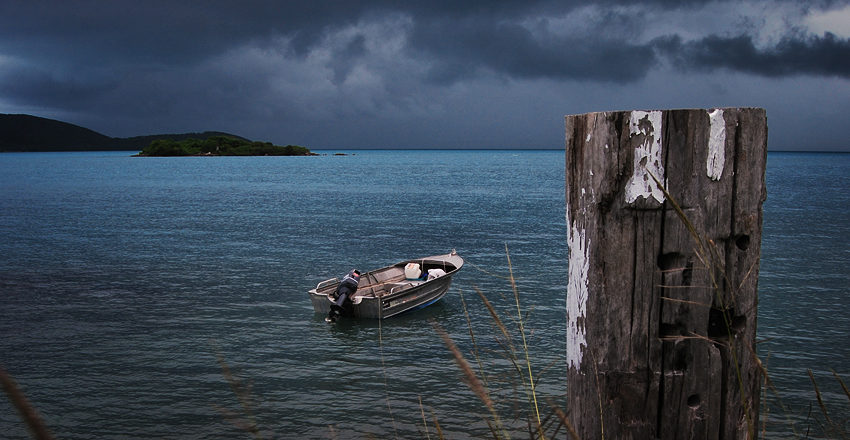
Indigenous peoples worldwide contribute the least to human-induced climate change, yet are among the most vulnerable to its effects. The United Nations Permanent Forum on Indigenous Issues brings to the forefront the specific vulnerability faced by indigenous peoples as a result of climate change. The Forum has emphasised the manner in which climate change exacerbates existing difficulties for indigenous peoples, including “political and economic marginalisation, loss of land and resources, human rights violations, discrimination and unemployment”.
Across Australia, indigenous peoples (Aboriginal and Torres Strait Islanders) constitute about 2.4 per cent of the total population, with over 100,000 living in remote regions. As many indigenous communities are located in low-lying coastal regions, they face significant climate-related challenges which exacerbate pre-existing socio-economic disadvantage. These challenges include increased temperatures, increased risk of disease (for example, mosquitos carrying disease), extreme rainfall and flooding, coastal erosion, sea level rise, and damage to local infrastructure. This position of disadvantage is compounded by climate change due to the environmentally exposed nature of many communities, many of whom are situated in deserts or on islands. The colonial history of Australia – marked as it is with the legacy of dispossession and forced removal – further exacerbates this situation.
This global portrait of the increased exposure, sensitivity and weakened adaptive capacity of indigenous groups is evident in the Torres Strait. The Torres Strait is populated by only a small number of people, with approximately 7,000 Islanders living in the region spread across 16 islands. In conjunction with a predicted rise in temperatures, changes in rainfall patterns will likely result in longer wet seasons and less predictable rains during the dry season. Coastal erosion and flooding will continue to impact the Islands, causing damage to homes and main infrastructure.
In 2008, the Australian Human Rights Commission’s Native Title Report 2008 provided an extensive case study of the impact of climate change in the Torres Straight and its implications for the rights of its indigenous people. The report determined that several crucial rights are at stake, particularly those relating to the right to life, water, food, health, culture and to a healthy environment.
However, addressing the widespread impacts of climate change is not simply a matter of imposing policies from above. In mitigating the risk of centralised and paternalistic government intervention, the Report highlights the importance of the 2007 United Nations Declaration on the Rights of Indigenous Peoples (UNDRIP) in responding to climate change, noting its emphasis on the “full participation and engagement of indigenous peoples in the development and implementation of national and international policy”.
The psychological, emotional, cultural and spiritual implications of climate change are more difficult to contain within the logic of normative climate adaptation, even as they are encompassed within existing rights frameworks. In addition to issues related to health and infrastructure, Karen McNamara notes the psychological and emotional impacts of climate change.
She states that “connections between the land, sea, environment and culture are paramount to identity, livelihood, and sustainability… environmental changes associated with climate change projections potentially compromise this core cultural identity”. That is, personal health is culturally embedded in the health of the land and the environment more generally. A right to health requires a right to the preservation of culture. And, as McNamara asserts, the realisation of these rights are predicated upon the preservation and care towards the earth.
Current adaptation to climate change has limitations when dealing with the intangible effects of climate on culture. Moreover, it does not include any mention of compensation for trauma suffered as a result of profound losses (nor the forms this could take). These difficulties have been articulated in the international community, particularly by countries most adversely affected by climate change in South America, Asia and Africa. This has resulted in the drafting of a framework called Loss and Damage. Loss and Damage is an emerging international platform designed to respond to irreversible climate change and its impact on communities. The development of this framework began nearly a decade ago.
In the Torres Strait, the framework of Loss and Damage will need to be informed by human rights. Loss is predicted to occur with the rise of sea levels threatening the islands of Saibai and Boigu. By 2100, it is predicted that these islands will be uninhabitable, forcing the issue of communal relocation. Given the strong relationship between land, culture and dignity, complex issues of identity and belonging will need to be negotiated in the cultural, political and legal spheres.
Climate change is already affecting vulnerable communities in Australia and internationally. In relation to indigenous peoples, the UNDRIP will provide the moral language of response and redress, particularly when complex and traumatic issues such as relocation come to the fore.
All efforts must be made to adapt to climate change and to ensure that financial and technological capacity is available to the most vulnerable, in order to strengthen resilience and build sustainable futures. Alongside this, however, it is imperative that we begin to respond to what has come to be known as Loss and Damage. A human rights framework would play a crucial role in recognising the cultural, emotional and psychological damage inflicted on indigenous communities as a result of climate change.
—
Dr Elaine Kelly has recently completed a postdoctoral fellowship at the University of Technology Sydney. Her work examines the ethical issues and implications of climate driven displacement, migration and relocation.
Feature image: Mark Roy/Flickr

